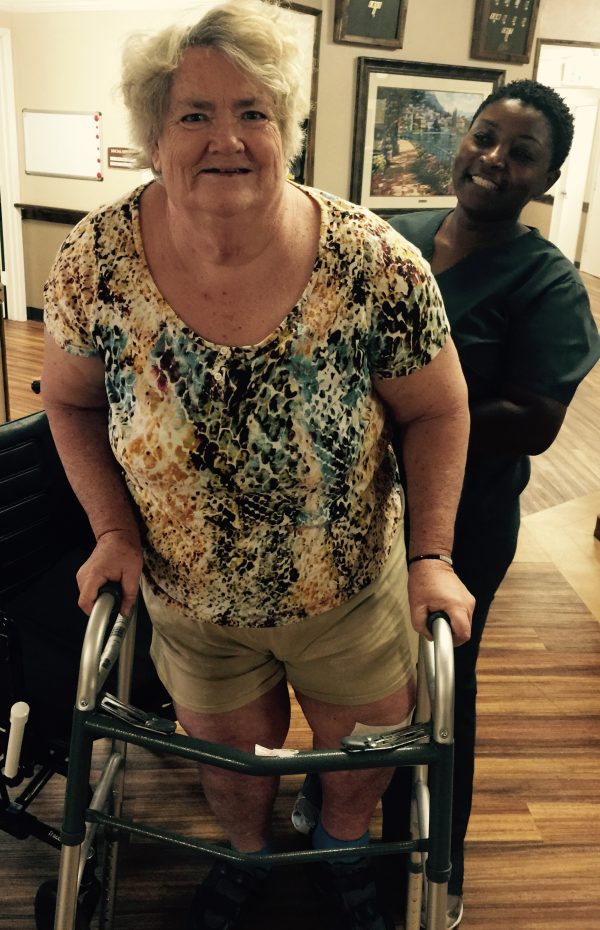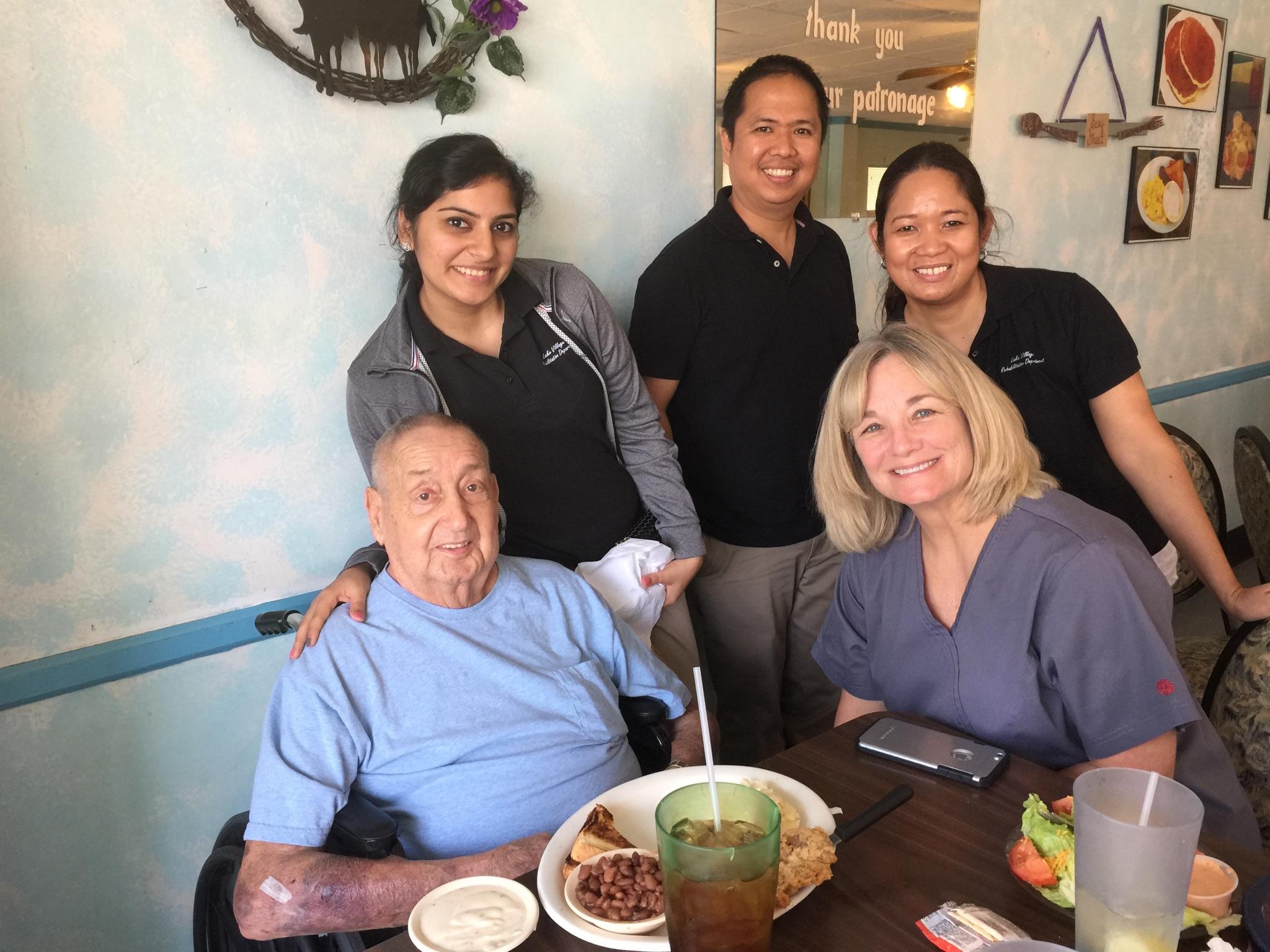
Our patient Polly Bee had not walked in 20 years, but our therapy team did not let that stop them from helping Polly follow her dream of walking again. Some of the approaches used by Lake Village therapists with Polly Bee included:
- Barihab utilized for balance, proprioception and standing tolerance
- Mobilization techniques to facilitate muscle flexibility for knee
- Muscle energy
- Joint mobility
- Standing activity tolerance
- Custom shoe for leg-length discrepancy
- Adaptive equipment for ADls/self-care training
- Postural alignment
- Home evaluation for environment modifications
Here, in her own words, is Polly Bee’s story.
It was a cold, wet morning 23 years ago when my life ended, as it was, in an accident that kept me in a wheelchair from then on. While riding in my mobile home, I was forced off the road by a tractor trailer. This broke my left femur in half, and my right foot yanked completely off by getting hung between the door and the step of my mobile home. Before we could get the wheels of the mobile home back on the road, we hit a 6-foot ditch, nose down, making it into an accordion.
The accident happened at 4:30 a.m., and I was taken to the emergency room, where I waited until 2:30 p.m. before I was operated on. Infection took over my left femur during that waiting time, and 32 surgeries later, I had lost not only my femur, but my whole left leg bone. My last surgery left me with a titanium bone from my left ankle to my pelvis. My knee cap was left on top of my internal prosthesis, floating and getting caught in the hinge of my knee, causing very severe pain. Ever since then, I have been in a wheelchair suffering with this pain, living life the best I could.
Two months ago, at 9:30 p.m., I fell off the bed and landed on my left knee, causing me to end up in the hospital for pain control. After getting my pain under control, I was forced to come to Lake Village Nursing & Rehabilitation Center in Lewisville, Texas, because I had no one to care for me at home. My only consolation of coming to Lake Village was that it was very close to my youngest daughter’s home.
At Lake Village, they have an excellent therapy department! I started off exercising my legs, which I had done many times in several rehab centers. But this time, one of my therapists, Addie, actually listened to me and addressed the problem that was causing the pain. She mobilized my kneecap to its proper position with use of slight pressure and used Biofreeze to massage my leg muscles to increase flexibility and facilitate joint movement.
I started to practice standing from there, because my pain was finally under control. I realized that I needed a built-up shoe that would lengthen my internal prosthesis leg to match the length of the normal leg. Once I received my custom shoe, I had overcome all the barriers. Before I knew it, I was walking over 100 feet on my walker! This was the first time I had walked or even taken a single step in 23 years!
This was not only a huge accomplishment for me, but also for Addie, Chris, Ellen and Eric. Hats off to the greatest therapists in the United States! This is the eighth rehab that I have been in since my accident. They all helped me make many accomplishments, but none as great as Lake Village. I always had a dream to walk again, but 10 years ago, I gave up on it and had no hope of ever standing on my own two feet, much less walking. Now I see some light at the end of the tunnel. I will be moving to my daughter’s home soon, and as I get stronger, my long-term goal is to be able to go back to my home in Colorado. All of this is due to the great therapists at Lake Village Nursing & Rehabilitation Center.








